Search Images
Browse Content (p. 1766)
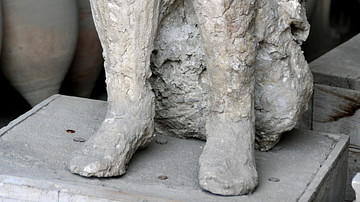
Image
Pompeii Victim, the Muleteer
A cast of the 'muleteer', a victim of the eruption of Vesuvius which completely covered Pompeii in 79 CE. The poisonous and super-heated gas cloud which struck Pompeii following the initial ash fall-out asphyxiated and baked any remaining...
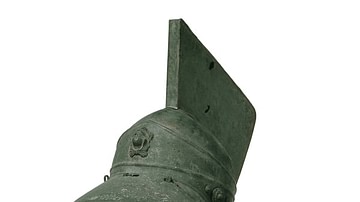
Image
Samnite Gladiator Helmet
A 1st century CE bronze gladiator helmet of the Samnite class. Roman gladiator helmets were richly decorated and plumed with ostrich or peacock feathers. This relatively plain example has the embossed head of Hercules at the front. Provenance...
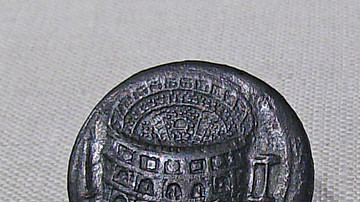
Image
Bronze Sestertius with Colosseum
A bronze sestertius from the reign of Roman emperor Titus (79-81 CE), which depicts the Colosseum or Flavian Amphitheatre. Clearly shown are the four arched stories, statues within the arches and the large monumental fountain - the Meta Sudans...
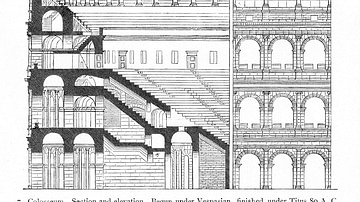
Image
Colosseum Cross-Section
A cross-section of the Colosseum or Flavian Amphitheatre in Rome (begun in 72 CE). The diagram illustrates the four floors with wide access stairways and the outer decoration of (starting from the bottom) Doric, Ionic and Corinthian columns...

Image
The Colosseum or Flavian Amphitheatre
Construction of the Colosseum in Rome was begun in 72 CE by Vespasian and completed between 81 and 96 CE in the reign of Domitian. The arena hosted gladiator contests, wild animal hunts and public executions.

Image
The Great Wall of China in Snow
A section of the Great Wall of China just north of Beijing. The wall was begun in the 7th century BCE and significantly extended by the Ch'in emperor Qin Shi Huangdi from 220 to 210 BCE.

Image
The Classical Orders of Architecture - From Greece to Rome, the Five Pillars of Architectural Design
This infographic illustrates the five classical orders of architecture—Doric, Ionic, Corinthian, Tuscan, and Composite—as developed in ancient Greece and Rome. These column styles, each with distinct proportions and decorative features, became...

Image
Bust of Roman Emperor Vespasian
A portrait bust of Roman Emperor Vespasian (1st century CE), recovered from the River Tiber. (Palazzo Massimo, National Museum of Rome).
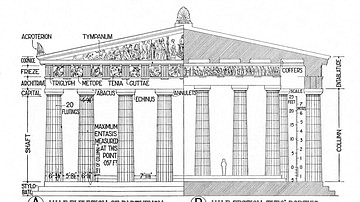
Image
Architectural Elements of the Parthenon
An illustration showing the principal architectural features of the Parthenon (447-432 BCE). The left side (A) illustrates the facade, the right side (B) illustrates the inner cella.

Image
Plan of the Parthenon
A drawing illustrating the floor plan of the Parthenon (447-438 BCE). The number of Doric columns in the outer colonnade (8x17) was unusual for a Greek temple (6x13). The cella contained the 12m high cult statue of Athena and the rear smaller...